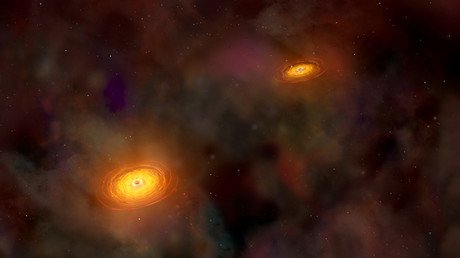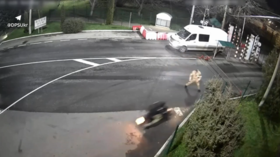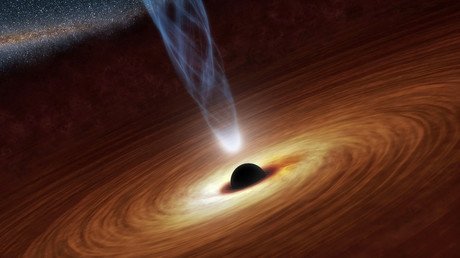Neutron star merger left behind a black hole, study says

A collapse of two neutron stars, which made headlines this year as the first-ever observation of gravitational waves confirmed by other signals, left behind a black hole, further study has revealed.
The GW170817 event reported by scientists of LIGO (Laser Interferometer Gravitational-Wave Observatory) earlier this year is considered one of this year’s most significant events in astronomy. The gravitational waves detected by LIGO stations coincided with electromagnetic radiation of a wide spectrum, which confirmed that the event causing the waves was a collision of two neutron stars.
READ MORE: Spectacular neutron star crash stretched space time by fraction of an inch (VIDEOS)
Superdense neutron stars are produced following a supernova, while a collision event between two neutron stars is called a ‘kilonova.’ Further research of the now-famous kilonova, which was observed in August, indicates that the remnant of this merger is most likely a black hole rather than a more massive neutron star.
Researchers from Trinity University in Texas, the University of Texas at Austin, and Eureka Scientific analyzed data from the Chandra X-ray Observatory to determine what happened after the collision. The data was obtained on December 3 and 6, 2017 – 108 days after the event.
The results indicate that radio and X-ray emissions were produced at the same source, and that the rising light-curve that followed the merger was likely due to an increase in accelerated charged particles in the external shock.
This could be explained either by a more massive neutron star being formed from the merger, or a black hole, according to the scientists.
“We show next that if the merged object were a hyper-massive neutron star endowed with a strong magnetic field, then the X-ray luminosity associated with the dipole radiation would be larger than the observed luminosity 10 days after the event, but much smaller than the observed flux at t ~ 100 days. This argues against the formation of a hyper-massive neutron star in this merger,” the study stated.
Earlier X-ray data also allowed scientists to rule out the theory that the object was a neutron star, leading them to conclude that “the merged object was most likely a black hole.”
The LIGO project revealed to the world at the start of 2016 that it had detected gravitational waves, confirming Einstein’s Theory of Relativity more than 100 years on.















